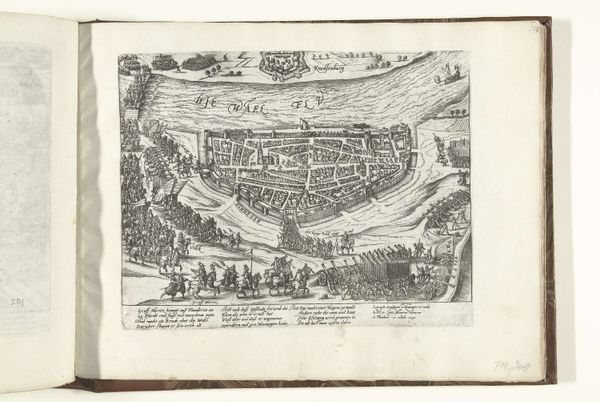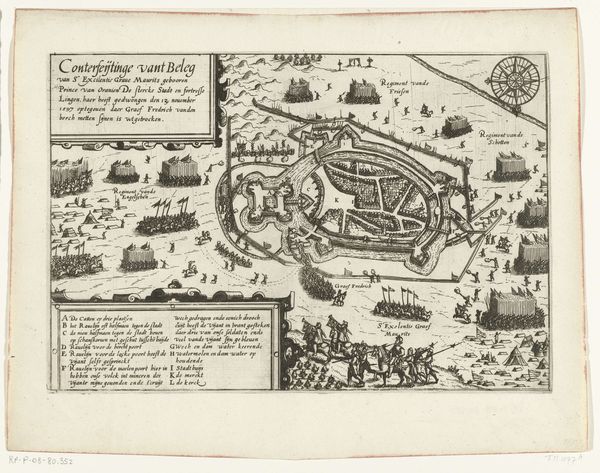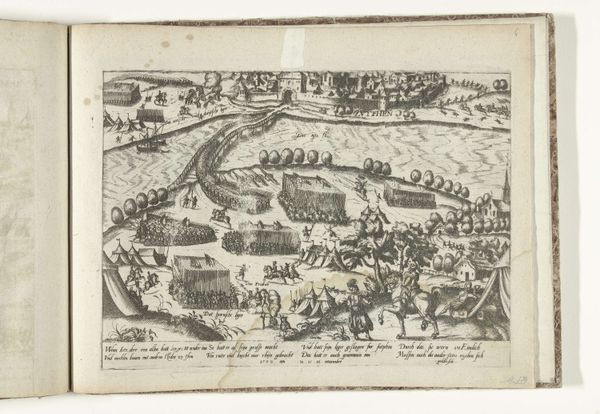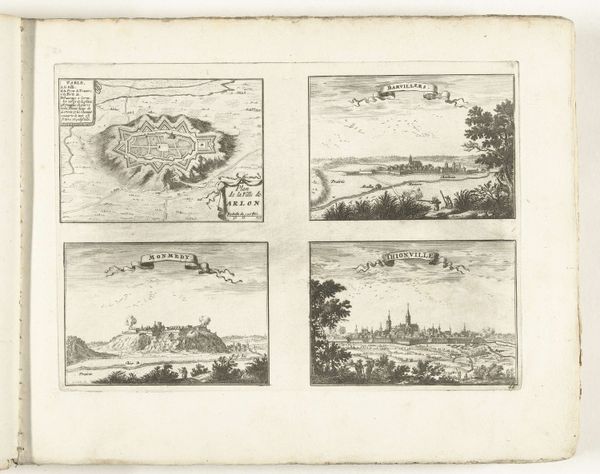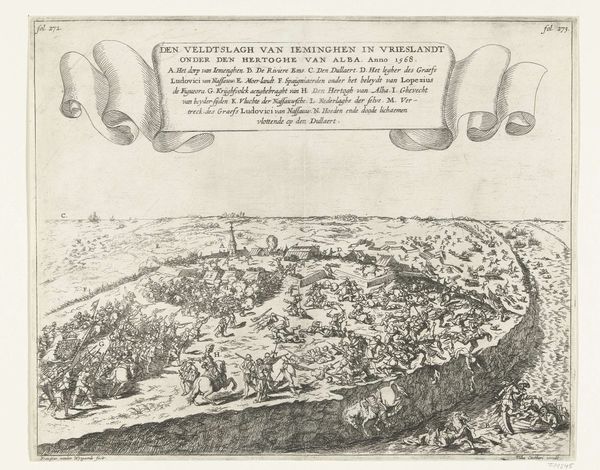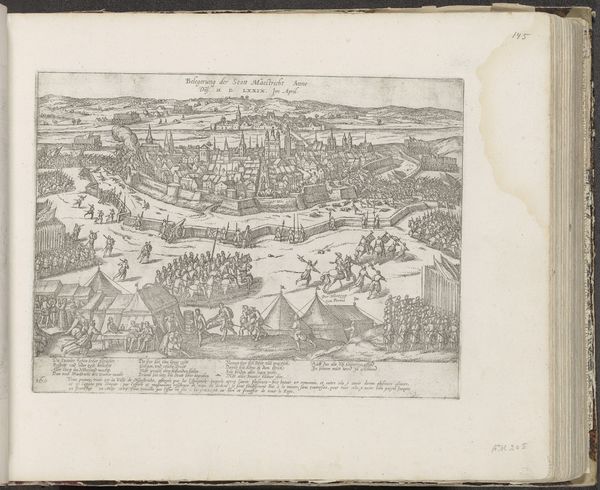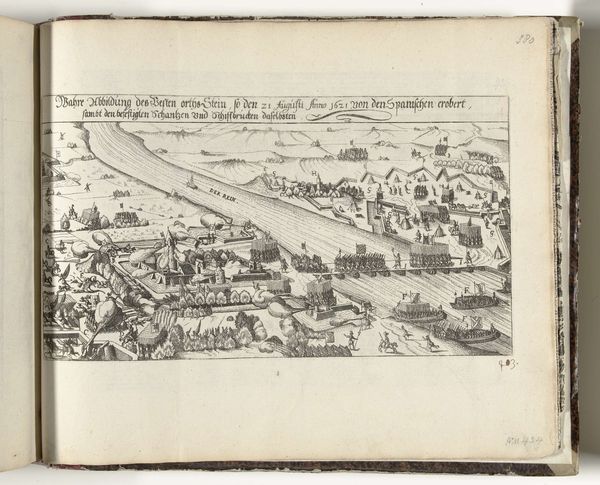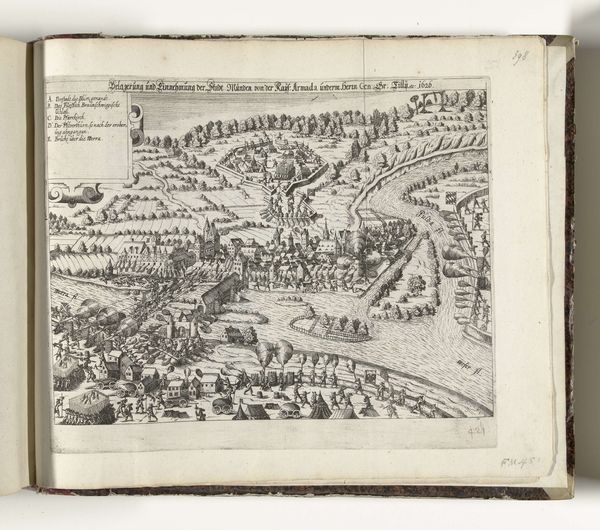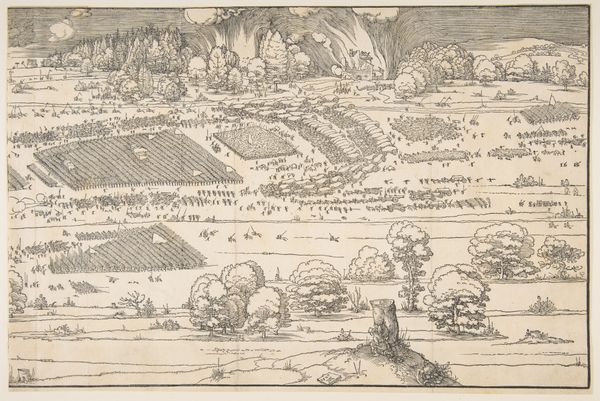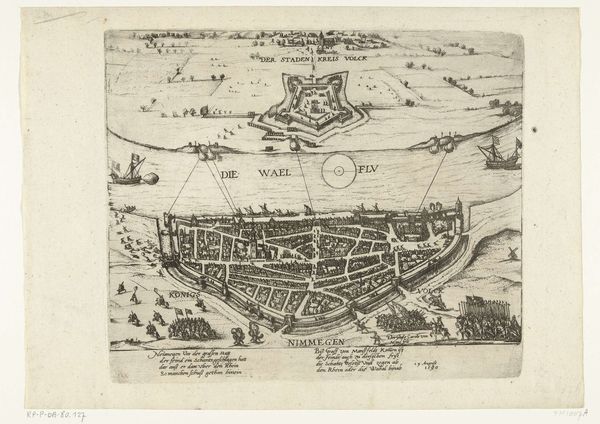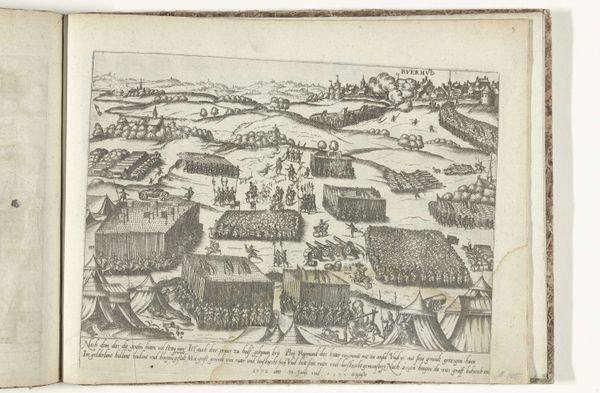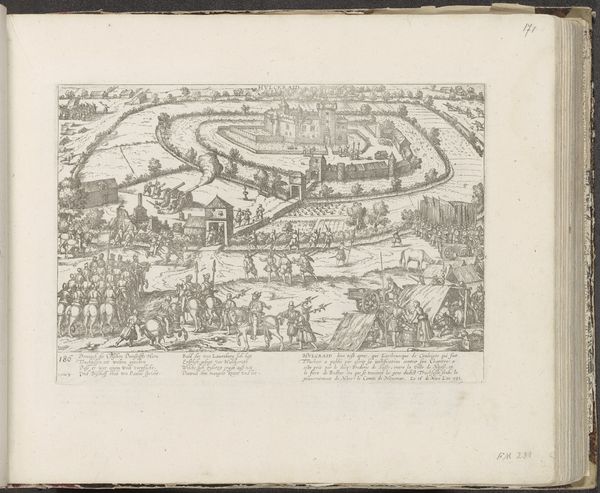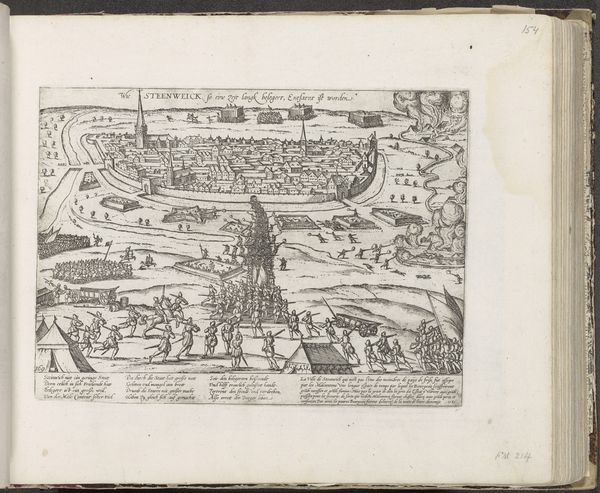
print, engraving
#
aged paper
#
toned paper
#
baroque
# print
#
pen sketch
#
old engraving style
#
sketch book
#
personal sketchbook
#
geometric
#
pen-ink sketch
#
line
#
pen work
#
sketchbook drawing
#
cityscape
#
sketchbook art
#
engraving
Dimensions: height 270 mm, width 370 mm
Copyright: Rijks Museum: Open Domain
Editor: Here we have "Gezichten op Munkács, Kanischa en Sziget" from around 1702, an engraving by an anonymous artist. The crisp lines detailing these four cities are incredibly precise, and the geometric rendering of the fortifications is particularly striking. What is your take on this piece? Curator: It is an interesting work. Immediately apparent is the use of line—primarily contour—to define forms. Note how the absence of tonal variation forces the viewer to engage solely with shape and placement. Consider how the lines function structurally; do they successfully convey depth or spatial relationships within the composition? Editor: I see what you mean. It almost feels flat, like looking at a map instead of a landscape. It makes me wonder if function dictates form here more than artistic expression. Curator: Precisely. One might then ask, how does this inherent flatness impact our understanding? Are we invited to consider its inherent symbolic properties or merely its denotative value? Observe, also, the regularity of the strokes. Does the uniformity lead to visual harmony, or does it induce a kind of stasis, limiting dynamic visual interest? Editor: It’s definitely more informational than emotional. I do appreciate the consistent detail throughout all four scenes though. It creates a very balanced page. I guess the choice of focusing solely on line does make sense, if the primary purpose was to document these sites in a clear, reproducible manner. Curator: Indeed. Perhaps, the intention of the artist and commissioner must be addressed to fully understand this representation. Now, how has this exercise adjusted your perspective? Editor: It makes me realize that sometimes, what seems like a limitation, like the absence of shading, is actually a conscious artistic choice serving a very specific function and aesthetic. Thanks!
Comments
No comments
Be the first to comment and join the conversation on the ultimate creative platform.

